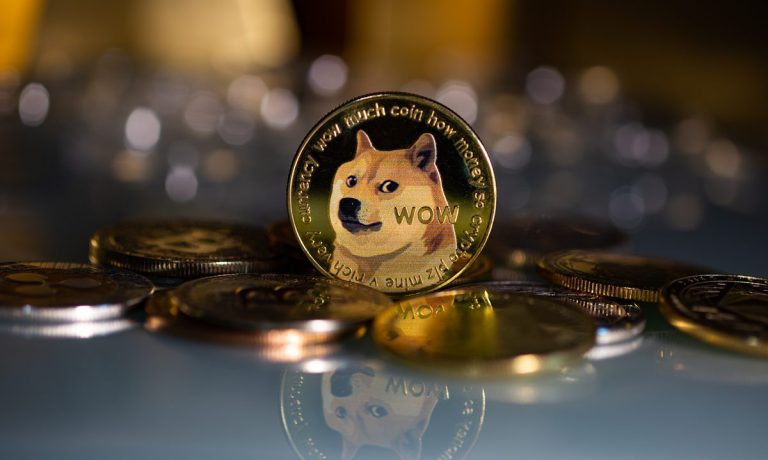
The Dogecoin Foundation wants you to take dogecoin seriously.
This is generally a statement that one would use to describe cryptocurrency projects that are trying to break through the noise long enough to let investors and developers know that they’ve built a better mousetrap.
Dogecoin, on the other hand, broke through the noise and attracted a lot of investors on the shoulders of one superfan: Tesla and SpaceX CEO Elon Musk. His Dogecoin memes run to the Lion King and and moons — telling his 66 million Twitter followers that the cryptocurrency will “moon” by skyrocketing in price, and (sort of) promising that SpaceX will “put a literal Dogecoin on the literal moon.”
Now it’s a real project with a new manifesto, new board and advisors, and, as of Dec. 23, a new development roadmap — well, a “Trailmap,” as the term roadmap “conveys a rigid way forward, led by a single company or ‘lead.’”
It’s an eight-part project that starts with a dogecoin.com website redesign and ends with a partnership to create a point-of-sale decentralized application (DApp), making it usable as a currency.
The goal is to make dogecoin what pseudonymous creator Satoshi Nakamoto wanted his bitcoin to become: a digital currency.
See also: Elon Musk Moons Dogecoin, Showing the Power of His 66M Twitter Fan-atics
According to the Trailmap, “The Manifesto was our attempt at capturing everything the community wanted from the dogecoin project: a ‘Currency of the people, for the people and by the people’, something humanity could really use, to buy a coffee or pay the rent.”
In case that didn’t sound like they have big dreams, the Trailmap’s prologue compared dogecoin to the denarius, the Roman coin that for some four and a half centuries was spendable anywhere in the empire — and at its height, was used by roughly one-fifth of the world’s population.
Small Steps
The Dogecoin Trailmap starts with the website redesign and creation of a Dogepedia. After that comes the first serious part: Project Libdogecoin. This is the creation of a library of software building blocks to make it easier for developers to work with dogecoin.
Third is the creation of Dogecoin Standard, which basically documents how the blockchain works. Then comes the Gigawallet, an enterprise-ready application programming interface (API) solution that, per the Trailmap, “can be set up in seconds and allow a developer to add Dogecoin transactions to their platform, as easily as they might with any polished payment provider.”
Then comes more developer tools, a way to add dogecoin blockchain nodes in remote areas, and then the big one — a shift from bitcoin-style proof-of-work (PoW) validating process by which new blocks of transactions added to the blockchain, to proof-of-stake. This is essentially a rewrite of the foundation of the blockchain, something ethereum is going through right now.
Read more: PYMNTS DeFi Series: What is Staking?
It has several benefits, all of which are some ways off for dogecoin. It doesn’t require energy-intensive, polluting mining of PoW, and it makes it possible for blockchains to scale to far more transactions per second. It also makes it possible for community members to earn validation rewards with huge hardware investments.
Snarky Beginnings
Dogecoin’s origins can be traced back to a 2013 tweet between two software engineers: Billy Markus, formerly of IBM, and Adobe’s Jackson Palmer.
A pair of designers knocked out the dogecoin in a couple of hours, giving its the face of a goofy Shiba Inu dog previously used as a popular meme format. Dogecoin’s mining scheme was convoluted on purpose, intended to stop people from mining DOGE, as it’s known on crypto exchange tickers.
Once it was picked up by Reddit, the project’s website attracted one million visitors in a month, but eventually died down into a small but passionate, and now quite well-off, community.
Then came Elon. Snoop Dogg got in on it, and so did Mark Cuban.
Suddenly, a coin whose mascot is a grammatically challenged and monosyllabic dog was cracking the top 10 cryptocurrencies by market capitalization — it’s currently No. 12, with a market cap of $25 billion — found itself in search of a purpose.
On Aug. 16, a group of developers egged on and supported by Musk and ethereum founder Vitalik Buterin announced “with great excitement” the re-establishment of the long-dormant Dogecoin Foundation, with “a renewed focus on supporting the Dogecoin Ecosystem, Community and promoting the future of the Dogecoin Blockchain.”
Stay with that for a moment. The cryptocurrency that went from $0.0045 to nearly $0.74 this year — up about 16,400% — before tumbling to its current 19 cents. It did that without even having an active foundation updating code, supporting developers, marketing the token and all the other things centralized blockchain projects had.
Along with a board of five developer/dogecoin community veterans, the Dogecoin Foundation now includes advisors appointed by Musk and Buterin, as well as Markus.
If it all comes to pass, dogecoin will not only be a joke that made good — it will be the first serious business tool in Comic Sans.